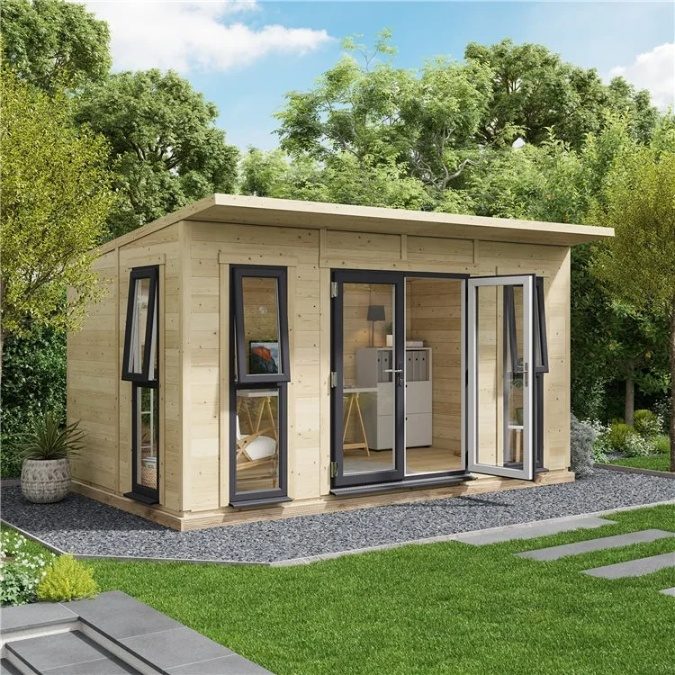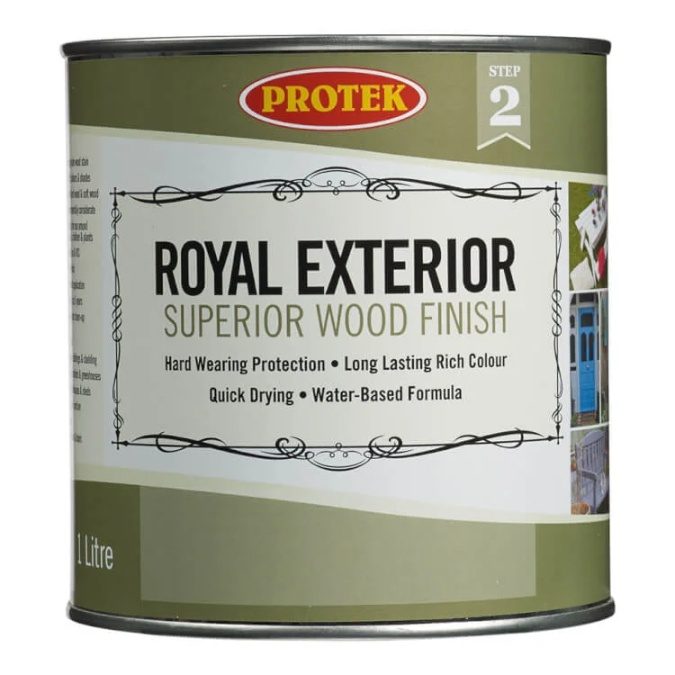Jump to:
Garden log cabins have a natural, rustic look that many UK homeowners love. But over time, weather can make the exterior look worn and faded. A good way to freshen up the cabin and protect it is by giving it a new coat of paint. It’s a bit of a project and needs some care to get it right, though. This blog post will walk you through each step and consideration for the best results!
Prepare Your Log Cabin Before Painting

We recommend not skipping this part to achieve that smooth, long-lasting finish. Otherwise, you might end up with uneven painting, flaking, or even rot if it’s not treated first.
Don’t paint over dirt, debris, or old paint—give the surface a good clean with a pressure washer or wire brush. Be careful to avoid leaving any marks or chips on the log walls.
Sanding can smooth out any rough spots, and the paint sticks better. Wipe down the surface with a damp cloth to clear away leftover dust or debris. The log cabin must be dry before painting.
For more details, check out this guide: How to Treat a Log Cabin Exterior
What’s the difference between staining and painting?
There are a lot of differences with things like the thickness and consistency between wood stains and wood paints, but the simplest way to think about it is: wood stain will give a deeper ‘wood’ colour, while paint is for the full colour spectrum.
For example, wood stains come in shades such as chestnut, dark walnut, honey maple, and red oak. These are all different tones of brown, meant to enhance the look of the wood for that ‘earthy’ feeling. However, with paint, you could go various shades of blue, green, brown, or any other colour that suits your garden.
The important thing is: both paints and stains act as effective wood treatments for protecting against rot.
Remember: don’t paint wood that has been recently pressure treated. Find out more in our guide: Can I paint pressure treated wood?
Choosing a Quality Log Cabin Paint

You have two choices: oil-based and latex-based paint. Oil-based paint is durable and gives a long-lasting finish. It’s resistant to moisture and offers good weather protection, but be wary of its strong smell. Latex-based paint is water-based, dries quickly, and has a lower odour. It’s also easier to clean but may not be as long-lasting as oil-based wood paints.
Tips: Match the colour with the style of your home and garden. Earthy tones like browns, greens, and greys blend with the natural surroundings. Darker shades like black or deep red can make a strong statement if you want something bolder. Matte or satin is a good choice for the finish as it gives a natural look.
Choose your colour scheme

Your choice of colour is subjective, but here are some suggestions for choosing a colour scheme you will be happy with:
- Match the colours with the surrounding environment – is the log cabin next to a fence? Paint them both the same colour!
- Paint the doors, windows and roof fascia a contrasting colour – light against dark, or dark against light looks fantastic.
- Mix primary/secondary and neutral colours – want something that goes with orange? Black, white and grey go with anything.
Step-by-Step Log Cabin Painting
This process can take some time, but getting it right will give you a great finish:
- Start by preparing the area once you’ve got your log cabin shed or log cabin summer house ready. Cover nearby plants or garden furniture with plastic or drop cloths to protect them from paint splatters.
- Next, prepare the paint as per the manufacturer’s instructions. This may include stirring or thinning it if needed.
- Tape some old newspaper or plastic bags over the panes of the log cabin windows. You don’t want any splashes of paint spoiling the view from inside.
- Then, apply primer. Make sure to use a primer that matches the paint, helps it stick better, and creates a smooth surface. This is especially important if the surface is rough or the paint you’re using needs extra help adhering nicely.
- Start with the first layer of paint in even strokes lengthways along the log boards, using a brush or roller and working in small sections. Choose whichever tool is easier or more comfortable for you. Don’t forget to check the manufacturer’s instructions for drying time between coats.
- Once the paint’s completely dry, remove the protective coverings and tidy up the area. Finally, add any finishing touches, like trim or accents on windows, if you like.
Tips: Consider using a paint sprayer for larger surfaces or hard-to-reach areas. It’s also best to keep the cabin about 2 feet away from walls and fences. This gives you space to paint and treat it properly and helps it dry better.

We hope this guide has given you the know-how to maintain your garden room’s pristine look and longevity for years! Shop our range of log cabins by clicking the button below.
If your cabin is pressure-treated and you’re thinking of painting it, this guide answers the FAQ: Can I Paint Pressure Treated Wood?
Shop Log Cabins




